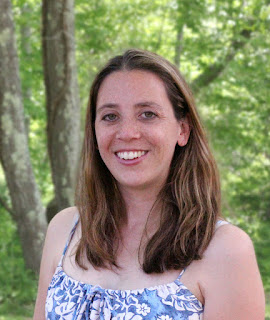Friday, June 30, 2023
So Many Bugs!
Wednesday, June 28, 2023
Explore Outdoors ~ Nomad Bees
Earlier this month I was watching the bees in my garden and saw this one collecting nectar from chive flowers. At first glance it looks like a wasp: thin waist, not very hairy, brightly colored, not collecting pollen. But it’s not a wasp; it’s a nomad bee (Nomada). Any other Wednesday I’d be sending you off on a 5-minute field trip, but I wanted to know how to tell the difference between nomad bees and wasps.
Saturday, June 24, 2023
More Activities for Pollinator Week
Friday, June 23, 2023
Bees Lead Busy, Buzzy Lives
Thursday, June 22, 2023
Wednesday, June 21, 2023
Explore Outdoors ~ Go on a Bee Walk
- how big is your bee?
- what colors does it have on its abdomen?
- what is the pattern of the colors?
- does it have longer antennae than other bees?
- is its abdomen flattish?
- what sort of sound does it make?
- what flowers does it visit?
- also note the date, time of day, and basic weather observations
Tuesday, June 20, 2023
Plant a Pollinator Patch
Monday, June 19, 2023
Celebrate Pollinator Week with Pie!
So, Three Cheers for Pollinators! And let's celebrate by making pie! It doesn’t matter what sort of pie you want – strawberry-rhubarb, peach, apple, blueberry, pumpkin – if you want pie, you need bees. So when I was writing The Pie that Molly Grew, I knew I wanted to include the important work of bees in the book.
Apples, peaches, strawberries, blueberries – they all depend on bees to pollinate the blossoms which then ripen into yummy fruits. Pumpkins too. And yes, pumpkin is a fruit even though it when it’s baked and smooshed and slathered with butter it looks like a sweet potato. And while peach and apple and strawberry flowers have everything they need in one blossom to produce a fruit, pumpkins don’t.
When pumpkin plants flower, they produce male flowers and female flowers. The male flowers make the pollen and the female flowers, once pollinated, make the fruit. There’s a problem, though: pumpkin pollen is too heavy to be carried by the wind. So pumpkins depend on bees to move the pollen from the male flowers to the female flowers.
Fortunately there are plenty of native bees that will do that job: bumble bees, carpenter bees, squash bees, cuckoo bees, longhorned bees, and sweat bees. And you’ll even find honey bees hanging around pumpkin flowers, too!
I'm celebrating pollinators all week, so drop by and check out pollinator patches, bee guides, and more!
The Pie That Molly Grew should hit bookstores around August 15, but you can pre-order a copy at Riverow Bookshop in historic downtown Owego, NY.
Friday, June 16, 2023
If you lived in a shell...
Wednesday, June 14, 2023
Explore Outdoors ~ Shiny bugs
Tiger beetles are carnivores. They hunt and eat caterpillars and other insects that can be pests in gardens and on farms.
This week, look for shiny insects. Take pictures or, if you don't have a camera, draw a picture and describe what you see.



.jpg)

















